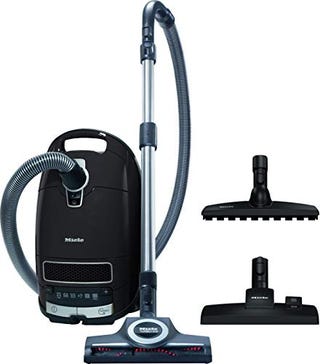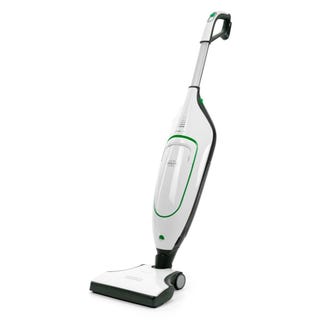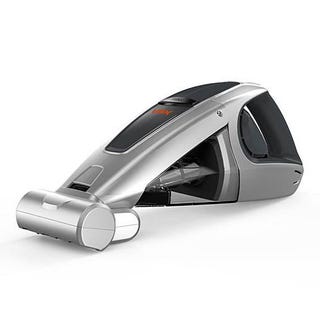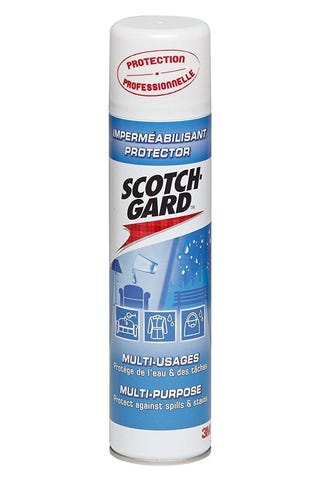Buy Bedroom Carpet
If you want to know where you'll really find fifty shades of grey, it's in a carpet shop. The choice of colours, never mind the more important issue of fibres and styles, is perplexing to say the least. Follow our guide to keep you in the loop!
GETTING STARTED
Where you're planning to lay your carpet, and what sort of footfall it will have to endure, will help you narrow down your options. You can afford to treat yourself to a bit of luxury in the bedroom, where a softer pile will withstand slippers or bare feet, but you'll need something with a dense, tight, low-pile tuft in those high-traffic areas.
Firstly, assess the durability of the carpet you're going to buy. Look at the thickness, resilience, material and weight of a carpet's pile. Do this by pressing your thumb firmly into the pile. The more quickly it springs back and recovers, the denser and more resilient it should be.
The density of your carpet should be a key consideration, particularly if you are looking to lay it in a high-traffic area, such as a hallway or stairs. The density is determined by how closely knitted each fibre is to another, rather than the depth of the carpet. Take a look at the back of the material to see how much space there is between the tufts. Large gaps mean the carpet will loose its resilience more quickly.
Check the weight of the fabric on like-for-like styles, for example by comparing one Berber with another. Weights should be printed on the back of the sample. As a rule of thumb, short, dense-fibre carpets are the most durable. You'll find that carpets with longer loops and strands look bulkier, but weigh less. As for colour, darker colours work best in well-trodden thoroughfares, but you could opt for a lighter shade for a bedroom.

Benjamin Torode Getty Images
Most retailers allow you to borrow a couple of samples before making a final decision, and will also offer a measuring and fitting service. Place the sample in lighter and darker areas of the room you're planning to carpet to get an idea of how the colour will be affected by light. Tread on it as well, to see how easily and quickly it springs back into shape.
Do a rough estimate before you go to shop around, so you can work out approximately what your carpet will cost, as this can be helpful when narrowing down your search. Measure the widest and longest part of the room, including any bay windows, under-stair spaces and door recesses that need to be fitted. Add at least 10cm to width and length measurements for trimming. You can use the same method to calculate underlay. Take this as a rough estimate only, though, particularly if you're fitting an irregular-shaped room, such as the hallway and stairs, and remember you'll have to add carpet grippers and fitting to the final cost. And if you really can't find that particular shade of grey you've set your heart on, some manufacturers provide a dyeing service to create a bespoke colour – at a price.
4 best vacuum cleaners

Best cordless
Dyson's Cyclone V10 Absolute scored top marks across the board in our tests, performing flawlessly on all floor types.
- Top marks across the board for its pick-up on multiple surfaces and flooring
- Very easy to assemble and change between heads with the quick release mechanism
- Indicators for battery level and blockage are on both sides of the handle, making it suitable for both left and right-handed users
- Canister is very easy to empty
- Comes with a good array of tools and accessories
- When fully charged, it lasted just over eight minutes while in continual use on the maximum power setting - it then needs three and a half hours to recharge
- It is expensive
- Handle gets quite warm with continual use

Best cylinder
A great all-round performer which offers exceptional results when it comes to picking up dust from floorboards and carpet. It effortlessly removes embedded pet hair in one sweep.
- Moves well across all floor types
- Excellent pick-up on all floor types tested
- High results for pet hair pick-up
- Easy to operate
- Straightforward set-up process
- Turbo head not as effective as AirTeQ floorhead on carpet despite being designed for that purpose
- Average results when collecting dust from the edges

Best upright
It provided an outstanding performance across all floor types and scored top marks for picking up dust on carpet, laminate and floorboards.
- Glides well
- Able to detect and respond to types of floor surfaces for optimum cleaning
- Great selection of tools, suitible for a plethora of cleaning tasks
- Outstanding pet hair pick-up
- Huge selection of tools is not ideal for storage
- Average edge cleaning scores

Best handheld
This handheld vacuum impressed our testers with its pick-up, scoring top marks on all types of flooring. The filter is washable, and the canister is easy to empty! It scored well in our car cleaning test too!
- Excellent pick-up on all floor types
- Easy to use
- Dust canister is easy to empty
- Integrated crevice tool
- Poor pet hair pick-up
- Long 12-hour charge time
THE OPTIONS
PILE FIBRE
Wool – Generally used for high-quality carpets, you'll pay more for natural materials, but you'll get a great looking floor covering that is made from sustainable fibre, is resilient and highly durable. It gets top marks for insulation, too – good for reducing heat loss and noise – and retains its appearance remarkably well. Wool also feels beautiful and soft underfoot!
Wool-mix – Some consider a mix of 80% wool, 20% man-made fibres (such as polyamide or polyester), as the best combination for an all-purpose carpet.
Polypropylene – This man-made carpet fibre is a popular choice, because it's hardwearing and resistant to stains. It can be cleaned using a part-bleached cleaning solution, although always check with the manufacturer or retailer first. However, Polypropylene is flammable and not self-extinguishing.
Polyamide (also known as nylon) – Available in a wider range of hues and vibrant clear colours that can't be reproduced in wool. A good all-rounder for family homes, good-quality polyamide or nylon carpets come with built-in stain-resistant treatments and score high marks for wearability.
Polyester – Often used for textured or shag carpets. Polyester is most like wool in appearance and feel, and is remarkably soft, durable and stain resistant. Most often used as a blend, rather than on its own.
PILE TYPES
Woven or tufted?
There are two types of carpet most commonly sold in the UK: tufted and woven carpets.
Woven carpets, such as Axminsters and Wiltons, are made using traditional loomed methods, and are labour intensive. You'll get a premium finish, but these carpets, widely regarded as the top-end choice, also come at a premium price.
Tufted is the most popular carpet type today and is made by a row of needles punching the pile yarn into a base material. It's easier to manufacture, and can be made using all types of yarns with a variety of finishes. Tufted carpet can be looped or cut (or both).
Woven
Axminster – Made a bit like an oriental rug, with fibres woven in and out through the surface backing on an Axminster machine. Axminster carpets are known for their rather grand, intricately patterned designs, quality and durability – and they are expensive. Until recently, most Axminsters came in a velvet finish, but now manufacturers are using twisted yarn as well, to reduce shading.
Wilton – Another luxury, quality carpet, it derives its name from the type of loom used, which weaves the yarn in a continuous strand. Available in a wide range of patterns, Wilton carpets have a smooth, velvety, woven surface.
Tufted
Twist – Hardwearing carpets with yarn which has been twisted tightly together, creating a one-way pile direction. Twist carpets are the most popular type of carpet currently being produced and come in plain colour or in a combination of complimentary shades to create a 'heather' look, which helps hide build-up of dust or animal hairs. It's also a good choice for places where tread always wears, such as hallways and stairs.
Berber or looped pile – Originally named after carpets made by the Berber tribe in Africa, a Berber or looped pile carpet is made from uncut continuous loops on the surface and has a distinctive knot appearance. Carpet can be looped, with a low-profile pile construction, which is known for maintaining its appearance, or have loops of different heights to form a textured pile. For a busy room, choose a Berber with smaller or tighter loops, which easily bounce back and decrease the chance of loops crushing and matting with wear and tear. A good all-rounder, however, not a great choice if you have pets, particularly cats, as they may pull up the loops with their claws.

Westend61 Getty Images
Flatweave – A good choice for stair runners, flatweave is created by interlocking warp (vertical) and weft (horizontal) threads. Although it's looped, it gives the impression of being completely flat and feels firm underfoot.
Saxony – A deep-pile carpet that is popular for bedrooms, it has a cut pile with long tufts giving it a gentle, soft feeling underfoot and a luxurious look. Its long pile makes it easy to flatten, however, so wardrobe and cupboard feet marks won't necessarily spring back as you might wish.
Shag – An opulent, luxurious deep shagpile. It has extra long tufts to give it its super shaggy look. Not ideal for areas with high-traffic, but a fantastic choice for a warm, gentle way to wake-up when you first step out of bed in the morning!
Velvet – A short, dense pile and a good choice for a luxurious floor covering in a bedroom, velvet pile has a smooth, cut pile finish and is usually available in solid colours.
THINGS TO CONSIDER
UNDERLAY
As well as working as a shock absorber, adding cushioning and comfort underfoot, a good underlay helps keep in heat and could help reduce your energy bills. Invest in a good underlay, if you can, whatever the budget for your carpet. A heavy-duty one will extend the life of your carpet and may even outlast it. Underlay helps a new carpet to sit properly and wear evenly. It reduces pile compression and enables a carpet to keep its appearance for longer.
Look out for an underlay with good acoustic qualities for areas with heavy footfall, particularly if you have teenagers living in the house!
Underlays come with a tog rating – the higher the tog, the better the insulation. If using underlay with underfloor heating, you won't need anything above a total rating of 2.5 tog.
Rubber
Waffle – Takes its name from the bubble pattern on the underside of the underlay. It can squash in areas of high-traffic, and is best for rooms that are less well used, such as a spare bedroom.
Flat – More compact and hard-wearing, to provide an even higher level of support and noise reduction.
Crumb – Made from recycled used car tyres, which are granulated into rubber particles. These are bonded together to create a highly durable, firm underlay suitable for any room with high traffic. It's also worth using in a room with heavy furniture to avoid those annoying indentations.
Crumb/felt – Made from a combination of rubber and felt, this style is less common than rubber waffle, but is a hardy underlay most often used for woven carpets to minimise rucking.
Foam
Polyethylene (PE) -– An entry-level, budget underlay made from closed-cell polyethylene foam.
Polyurethane (PU) – A form that is 80% recycled, made from granulated foam that is compressed and thermally bonded together, it's very widely used and suitable for most carpets.
Jute – With a felt or rubber top, this natural fibre doesn't flatten, crumble or dry out.
Recycled felt – A greener option, but will compact more easily and is best used for rooms that see less use, like a study or spare room. Good heat insulation makes this a great choice for concrete flooring.
Felt and rubber – The best of both worlds, these create an underlay that is comfortable underfoot but has the firm support of rubber for high traffic areas.
MAINTENANCE
New carpets tend to shed fluff. It won't harm a new carpet to vacuum it as soon as it has been laid, which will take up any short loose fibres. Vacuum at least once a week and use a barrier mat in areas that are most likely to soil, such as by the front door.

Scotch Guard
Scotchgard Multi-Purpose Protector 400ml
amazon.co.uk
Stain inhibitors and treatments, such as Scotchguard, make it easier to wipe off spills, but they are not a magic solution. Deal with spillages and stains as soon as they occur.
Do not rub or over-wet the carpet. Remove solids by gently scraping with a knife. Greasy residue can be treated with an oil/grease remover sprayed on to an absorbent cloth. Blot but do not rub. For liquid spills, blot up as far as possible with a paper towel then use a carpet stain remover recommended for your carpet.
For deep cleaning, shampoo the carpet following the manufacturer's instructions or, for best results, hire a professional carpet cleaning company.
For the latest household advice, GHI taste tests, tech and money-saving hacks, sign up to our weekly newsletter HERE
This content is created and maintained by a third party, and imported onto this page to help users provide their email addresses. You may be able to find more information about this and similar content at piano.io
Source: https://www.goodhousekeeping.com/uk/product-reviews/a665115/which-are-the-best-carpets-to-buy-for-home/

0 Komentar